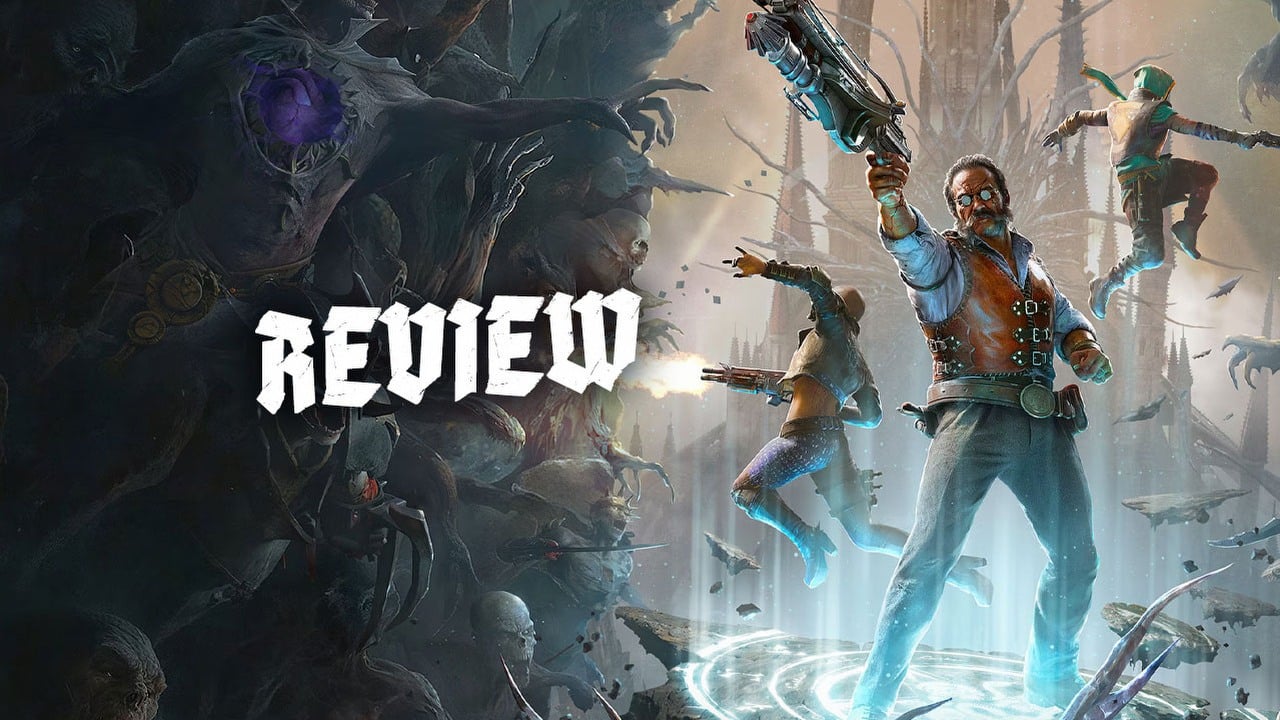
Some game revivals are welcome surprises, while others feel pointless from the beginning. After playing the new Painkiller for a while, it’s clear this one falls into the latter category. To be honest, the game feels uninspired, lacks strong design, and, most importantly for a fast-paced arena shooter, it’s just not fun.
Okay, so I was really excited about this game. The idea was amazing – take that classic demon-killing action, make it super fast-paced like those old-school ‘boomer shooters’, and let you play through it with friends. I was picturing something like Doom Eternal crossed with Left 4 Dead, a really dark and cool co-op experience. It sounded perfect, honestly. But sadly, it just…didn’t work. It really missed the mark on almost everything it tried to do.
I won’t dwell on whether the shooting is enjoyable because the game has much bigger problems. The new Painkiller is very short – you can beat the campaign in about four or five hours. There’s no real incentive to replay it, and it’s full of fundamental design issues. Specifically, it forces you into co-op with unhelpful bots, has progression systems that don’t add much, and features forgettable characters who look like they were rejected from Fortnite, delivering awkward dialogue.
Is this co-op really necessary?
The biggest flaw in the game is that it requires players to team up. It’s not a feature you can simply enable for cooperative play; the whole game is designed around it. Even if you prefer playing alone, you’re forced to play with a team of three when you start the campaign.
What does this actually mean for players? If you don’t have two friends to play with, the game will automatically fill your team with computer-controlled partners. These bots will run alongside you, shoot enemies, and unfortunately, constantly talk throughout every mission. This feels like a big departure from the original Painkiller games, which were all about the power of being a lone warrior. Instead of that feeling, you get stuck with one player and two frustrating companions, and it’s clear from the start that something isn’t quite right.
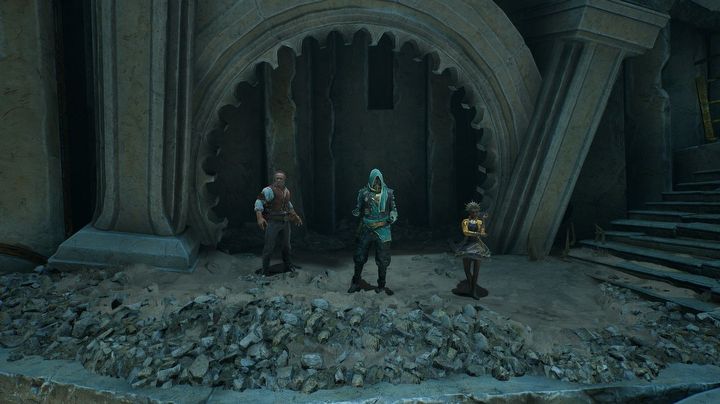
The game’s reliance on always having a ‘partner,’ even if it’s just AI, creates frustrating technical issues. For example, the new Painkiller doesn’t have a pause button at all. I discovered this the hard way: I was in the middle of a mission and needed to take a dinner break. I left my character in a safe spot, assuming the AI would manage any remaining enemies, but when I returned after a few minutes, the game kicked me out for inactivity! That’s right, I was kicked out of my own single-player campaign simply for stepping away from the keyboard for a moment. It feels like the game doesn’t prioritize solo players at all, treating them like an afterthought rather than the core audience. It isn’t a true single-player campaign with optional co-op; it’s a bare-bones experience.
The biggest problem isn’t the bots’ weakness, but their sheer incompetence. In Painkiller, they’re more likely to hinder your progress than the demons are. Their artificial intelligence is extremely basic: they either rush blindly into battle or get hopelessly stuck in the environment, often blocking your path or freezing up behind walls.
The game has some strange glitches that can really break the experience. I encountered one after defeating a boss – instead of a victory screen, nothing happened. The boss was gone, but I was stuck running around because the game wouldn’t progress. It turned out the game needed all three of my characters to be in a certain location to trigger the next scene, but my companions were stuck and wouldn’t move. The only way to fix it was to replay the entire level, which took several minutes.
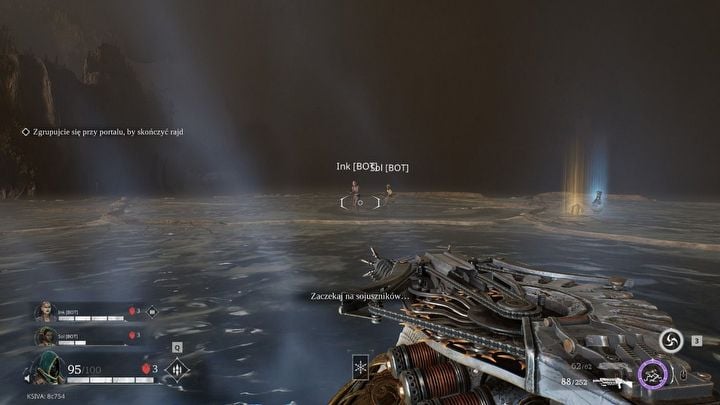
To make matters worse, the characters just won’t stop talking! The developers added a lot of unnecessary dialogue, filled with corny jokes and attempts at humor. While we’re trying to concentrate on the game, we’re constantly interrupted by terrible jokes. It completely ruins the atmosphere, and after only a few minutes, it’s incredibly frustrating. This forced teamwork isn’t just a poorly designed feature—it’s a major flaw that consistently detracts from the experience.
Fortnite characters
While the game features cooperative play, its attempt to add variety through four ‘unique’ characters falls flat. These characters feel like generic designs you’d find in any live-service game – simply a collection of uninspired, visually inconsistent skins with no real personality. The developers seem to have mistakenly believed that offering different character models is enough for a co-op game, overlooking the core principle of the genre: meaningful character diversity and depth.
The four characters are almost identical, differing by only a single, minor stat—one might have a bit more health, another a little more damage. That’s the extent of their differences. They lack unique abilities, weapons, or movement styles, and there’s nothing that sets them apart in combat. Every character plays exactly the same way with the same weapons. This is a significant flaw for a game focused on teamwork, as it eliminates any synergy or strategic reason to build a specific team. They’re essentially four copies of each other.
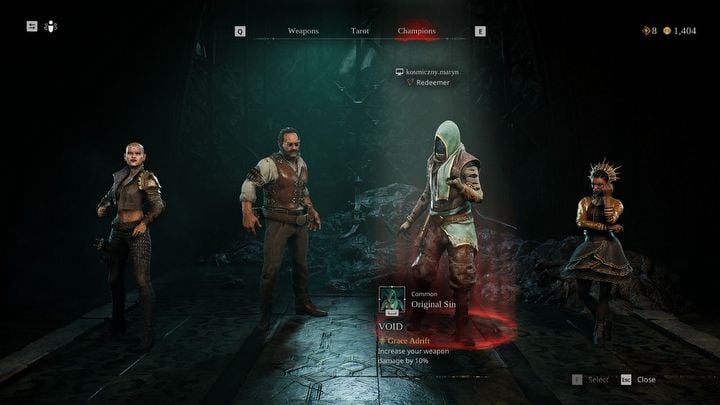
The developers attempted to explain the characters and story, but their approach was even more problematic than the initial design. They crammed all the important details – explanations, conversations, and plot twists – into the middle of chaotic battles. It’s nearly impossible to keep up! When you’re fighting for your life against waves of enemies, you’re not going to focus on reading subtitles or listening to what characters are saying.
I was completely lost while reading it – I couldn’t follow the plot or connect with any of the characters. Even when I tried to concentrate, the writing felt flat and uninspired. It’s a typical demon story, but lacks any originality. Instead of drawing me in, the characters and plot just became irritating and faded into the background.
A campaign for one afternoon
Unfortunately, the game’s weak character designs and technical problems aren’t the only issues. The main campaign in the new Painkiller is quite short – you can beat it on a normal setting in about four or five hours. While that length could work for a really refined and replayable game, this isn’t it.
As a fan, I have to say the way this adventure is structured really hurts the experience. Instead of a clear story that builds as you play, it’s broken up into three areas, each with just three levels – so only nine missions total. And you can play those areas in any order! Honestly, that freedom just destroys any sense of story. It was already hard to follow what people were saying during the action, but jumping all over the place between different story threads made the plot feel completely chaotic and messy. There’s no real tension, the characters don’t feel developed, and it just feels like a bunch of separate levels stuck together instead of a cohesive story.
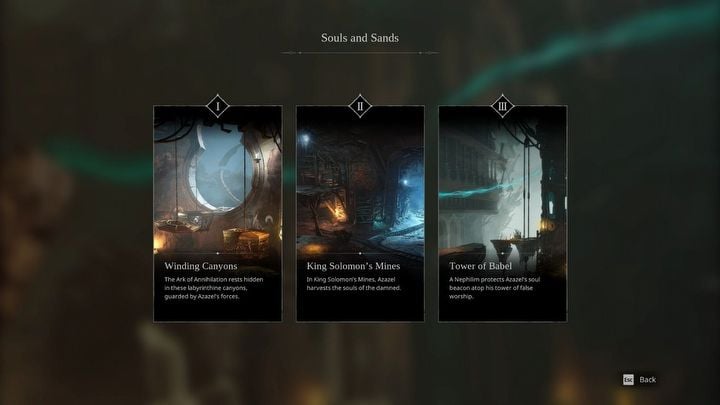
After finishing the main game (which takes about 4-5 hours), there’s an extra roguelike mode. It sounds good at first – you fight waves of enemies in arenas and grab temporary power-ups. However, it has the same core problem as the main game: it lacks substance. Once you finish a run or fail, that’s it. There’s no lasting progress – you can’t unlock new abilities, improve your character, or earn resources to help on future attempts. This makes the mode just as repetitive and dull as the story mode, but it happens even quicker.
Painkiller doesn’t offer any replay value or reasons to return after finishing the main story. Once you complete the campaign, there’s nothing left to do – it’s a short-lived experience easily forgotten, including its characters.
- Satisfying shooting mechanics;
- boss fights are the best element of the game;
- six available weapons in the game are reasonably varied;
- visited biomes can at least be atmospheric in terms of visuals.
CONS:
- Campaign is very short, it can be completed in 4-5 hours;
- co-op is forced, there is no option to play solo without bots;
- generic characters, without any diversity;
- bots can get stuck, forcing you to do the mission from the start;
- poor storyline, which is hard to follow;
- level and challenge designs are boring and linear;
- uncreative and repetitive mission objectives;
- game lacks enemy variety;
- wasted potential of the Tarot Card system;
- weapon upgrade system is too simplified.
It could have been good
When it comes down to it, the shooting in Painkiller can actually be enjoyable. The basic mechanics are solid – it feels good to shoot things. Destroying demons is exciting, and the game offers a decent variety of weapons. It’s fast-paced and the character moves well, which sets the stage for a fun experience. However, unfortunately, these good elements are overshadowed by poor design choices that ultimately make the combat frustrating rather than enjoyable.
The game’s level design needs improvement. While the three environments look good, the levels themselves are uninspired and straightforward. They lack alternate routes, engaging challenges, or hidden discoveries. Essentially, gameplay consists of moving between small, confining spaces, which doesn’t complement the characters’ speed and agility.
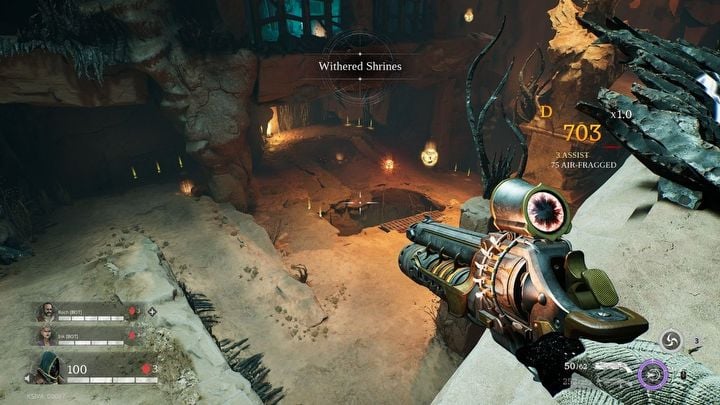
The levels often feel limited to dull, repeating tasks. Instead of engaging missions, you’ll mostly be killing waves of enemies, collecting blood, or simply moving objects around while waiting. What makes it worse is that you fight the same demons over and over. New areas don’t introduce fresh challenges – they just change the look of the environment while throwing the same old enemies at you.
To make matters worse, the game is visually overwhelming. With three characters and numerous demons fighting in a confined space, the screen quickly becomes a chaotic blur. The sheer number of explosions, particle effects, and blood splatters make it difficult to follow the action. Ironically, the fast-paced movement, intended as a strength, becomes pointless because it’s impossible to keep track of what’s happening.
Progression systems
Even though the story and goals aren’t met, do the game’s progression systems offer a reason to continue playing? Sadly, Painkiller continues to disappoint with underdeveloped ideas and simple gameplay. Weapon upgrades, for instance, seem promising, but are ultimately very basic. You can choose from only two upgrades and two add-ons for each of the six weapons. While it’s good that you need to actually use a weapon to unlock its best upgrades, the short campaign means you’ll max out your favorites quickly, making the entire system feel pointless. There’s a lack of depth, no meaningful skill trees, and nothing to really keep you playing for an extended period.
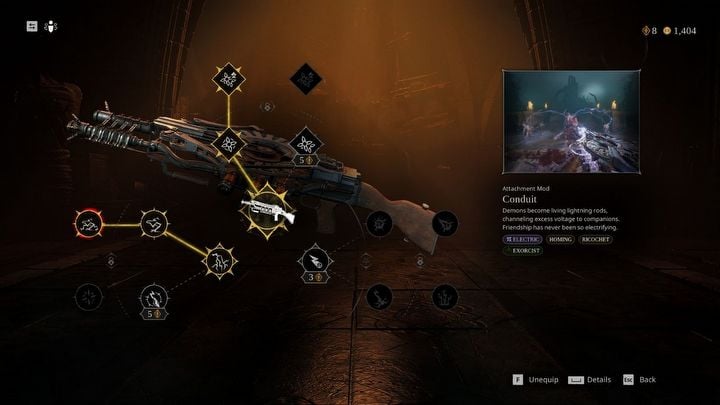
The most disappointing part of this game is definitely the Tarot Card system. It was intended to add replay value and interesting character builds, but it actually feels repetitive and frustrating. Here’s how it works: you spend in-game money to randomly draw cards, and you can equip two before each mission for minor bonuses. While that sounds okay, the details ruin it. Most of the cards offer weak, uninspired perks, and it’s so difficult to unlock new ones that, after completing the game, I only had a small collection and didn’t bother with them at all.
The biggest problem is how the Tarot Cards work. You can only use each card once, and then you have to pay to unlock it again. But that same money is also used to make your weapons permanently stronger. This creates a frustrating choice: do you invest in lasting power, or a temporary, small benefit from a card? Most players will clearly choose the permanent upgrade. This system actually discourages trying out different cards, and instead of making the game more replayable, it just feels like a bothersome feature that people will likely skip.
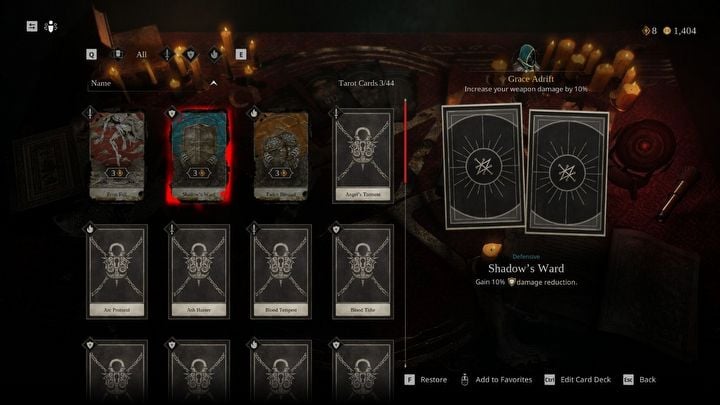
Bright spots?
Despite all the issues with the game, I have to admit Painkiller does have one really good part: the boss battles. If you can look past the repetitive levels, uninteresting tasks, and technical problems, the fights against the bosses are genuinely challenging and well-done.
Honestly, when I saw those final boss fights, I got so excited! You could really tell this studio has some serious talent. The bosses themselves were incredible – huge, atmospheric, and genuinely intimidating. They weren’t just damage sponges; they had different phases, cool attacks, and kept me on my toes. I was so caught up in the battles, I almost forgot about all the frustrating stuff with the earlier bots. The fight design was just that good, and it really pulled me in.
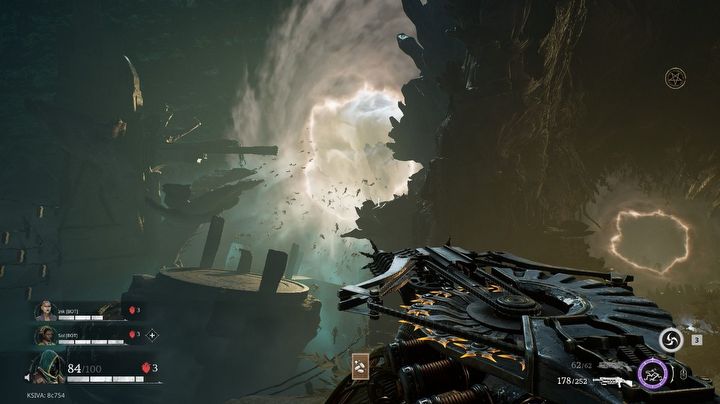
Even the best parts of the game had a minor flaw. While the encounters were visually impressive, they often went on for too long. Instead of testing my skills, the battles became about simply dodging attacks, and combined with all the on-screen action, it could be quite tiring. Thankfully, these fights were exciting enough to prevent the game from being a complete failure, but it’s disappointing they don’t make up a larger part of the overall experience.
Conclusion
Let’s be direct: the new Painkiller is a disappointing game. It doesn’t show promise or suggest it could be improved by the modding community. It feels rushed and poorly designed on almost every level. The game’s systems seem randomly assembled, lacking cohesion and purpose. Ultimately, it feels like a shallow attempt to capitalize on a well-known name, offering very little in terms of actual gameplay.
It’s puzzling why the cooperative mode was designed the way it was. Painkiller has always focused on a single player feeling powerful, not on teamwork. If the developers were going to include co-op, they should have fully embraced it by creating distinct characters with abilities that truly mattered and encouraged players to work together. A proper progression system and a lot more content – beyond just a short campaign – were essential. As it stands, the co-op mode feels like a frustrating, flawed, and ultimately pointless addition to the game.
The most frustrating thing is that the game doesn’t let you play alone. You’re forced to use bots, and they’re a real problem – they’re buggy, often freeze, and just get in the way of enjoying the game. This lack of a solo option really shows the developers don’t understand what players want from this type of game.
Honestly, we don’t recommend this game. There are many other co-op shooters available that are more fun and won’t waste your time, and they cost about the same.
Read More
- Super Animal Royale: All Mole Transportation Network Locations Guide
- Shiba Inu’s Rollercoaster: Will It Rise or Waddle to the Bottom?
- Zerowake GATES : BL RPG Tier List (November 2025)
- The best Five Nights at Freddy’s 2 Easter egg solves a decade old mystery
- LINK PREDICTION. LINK cryptocurrency
- Daisy Ridley to Lead Pierre Morel’s Action-Thriller ‘The Good Samaritan’
- xQc blames “AI controversy” for Arc Raiders snub at The Game Awards
- Pokemon Theme Park Has Strict Health Restrictions for Guest Entry
- Wuthering Waves version 3.0 update ‘We Who See the Stars’ launches December 25
- New Assassin’s Creed Shadows Update Will Add Some Truly Grisly Finishers
2025-10-28 13:35